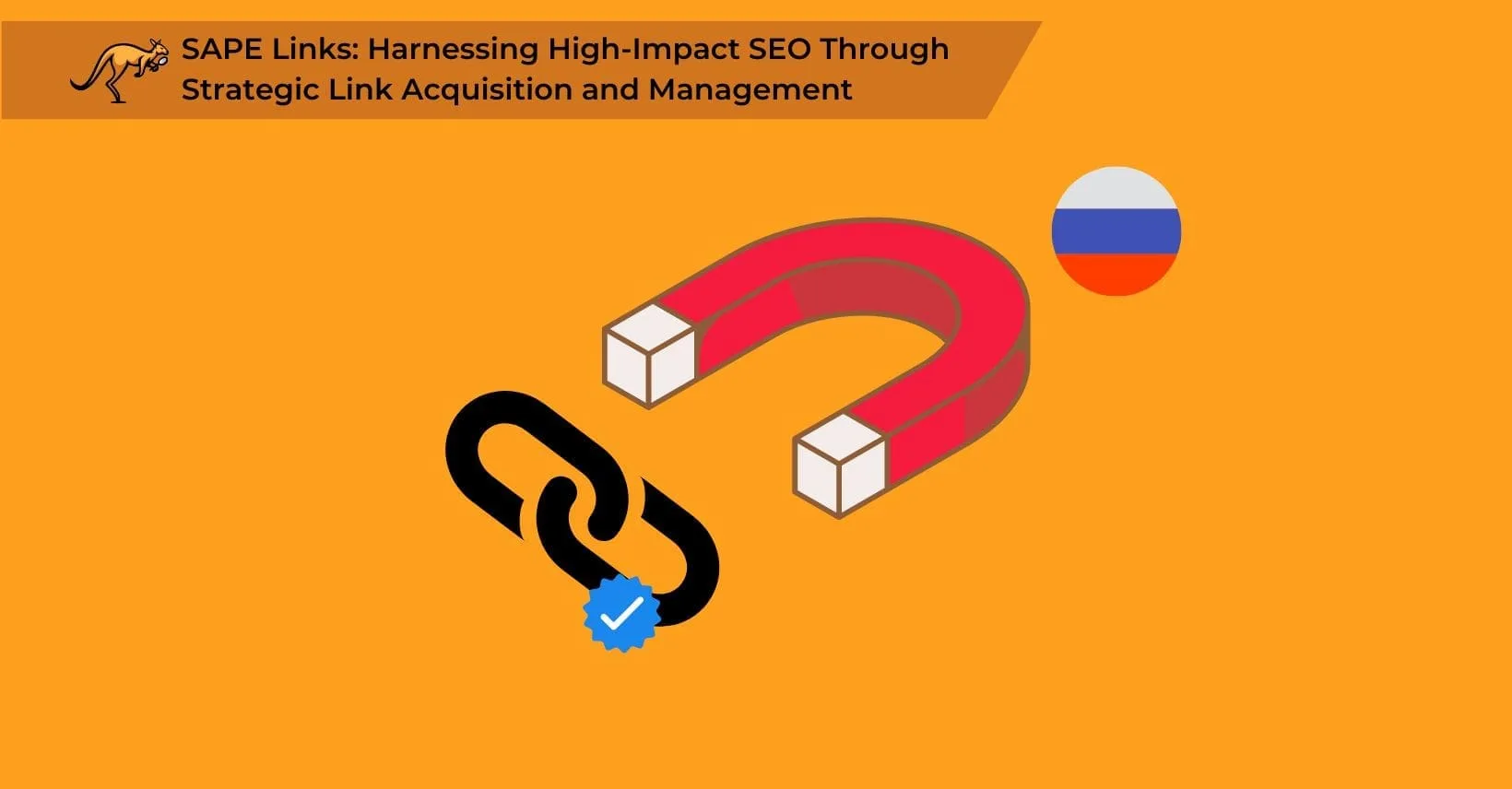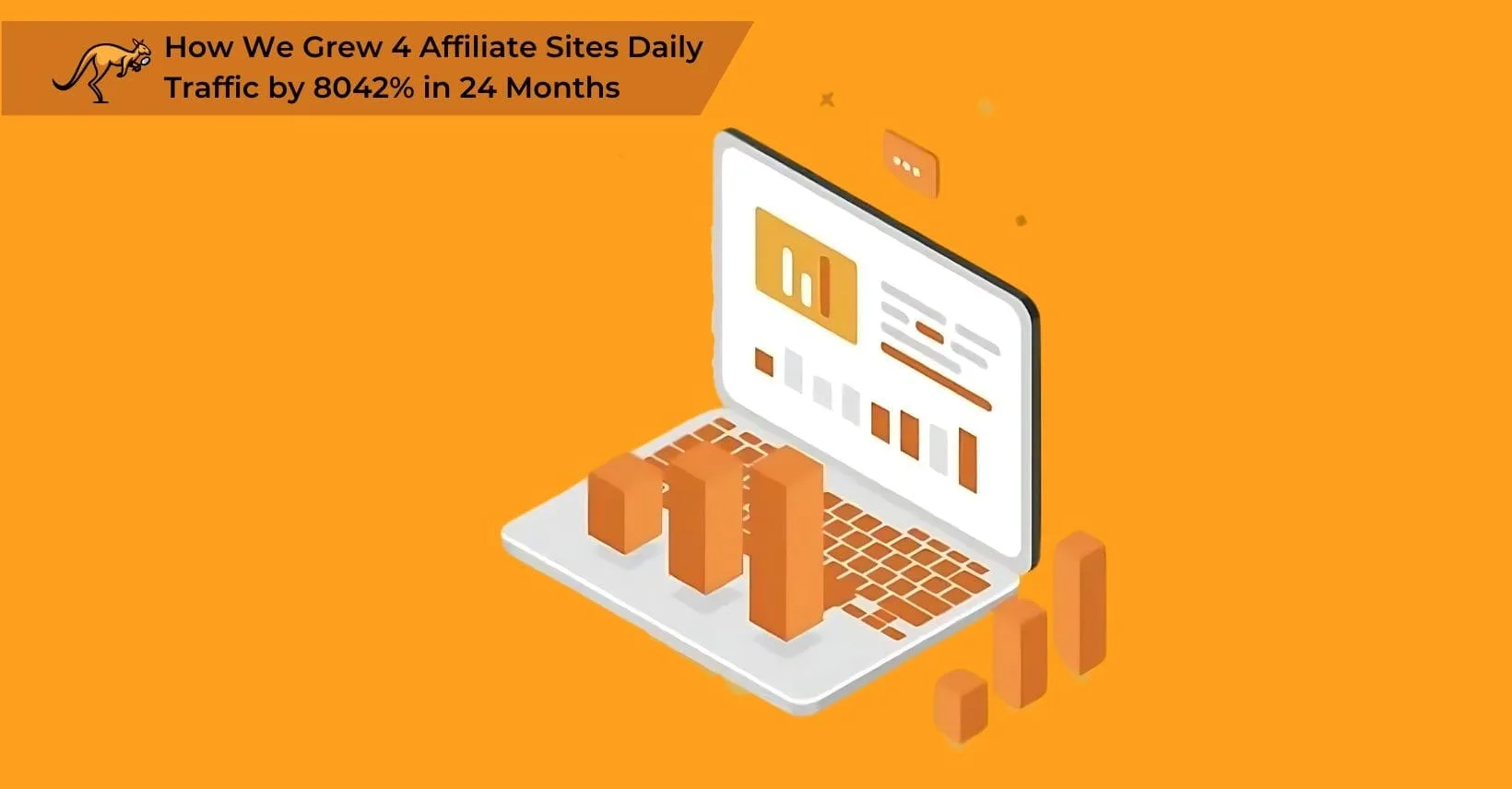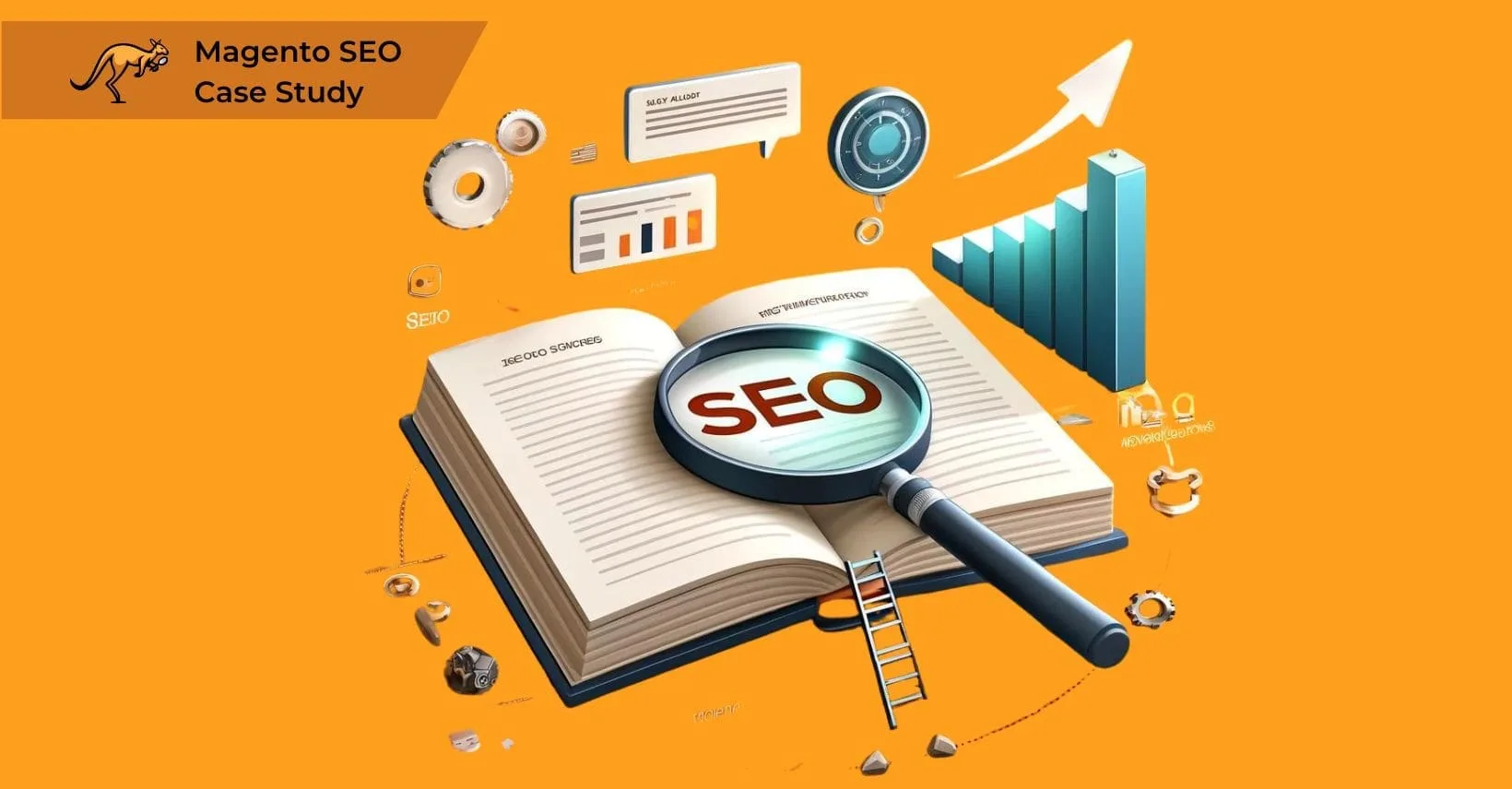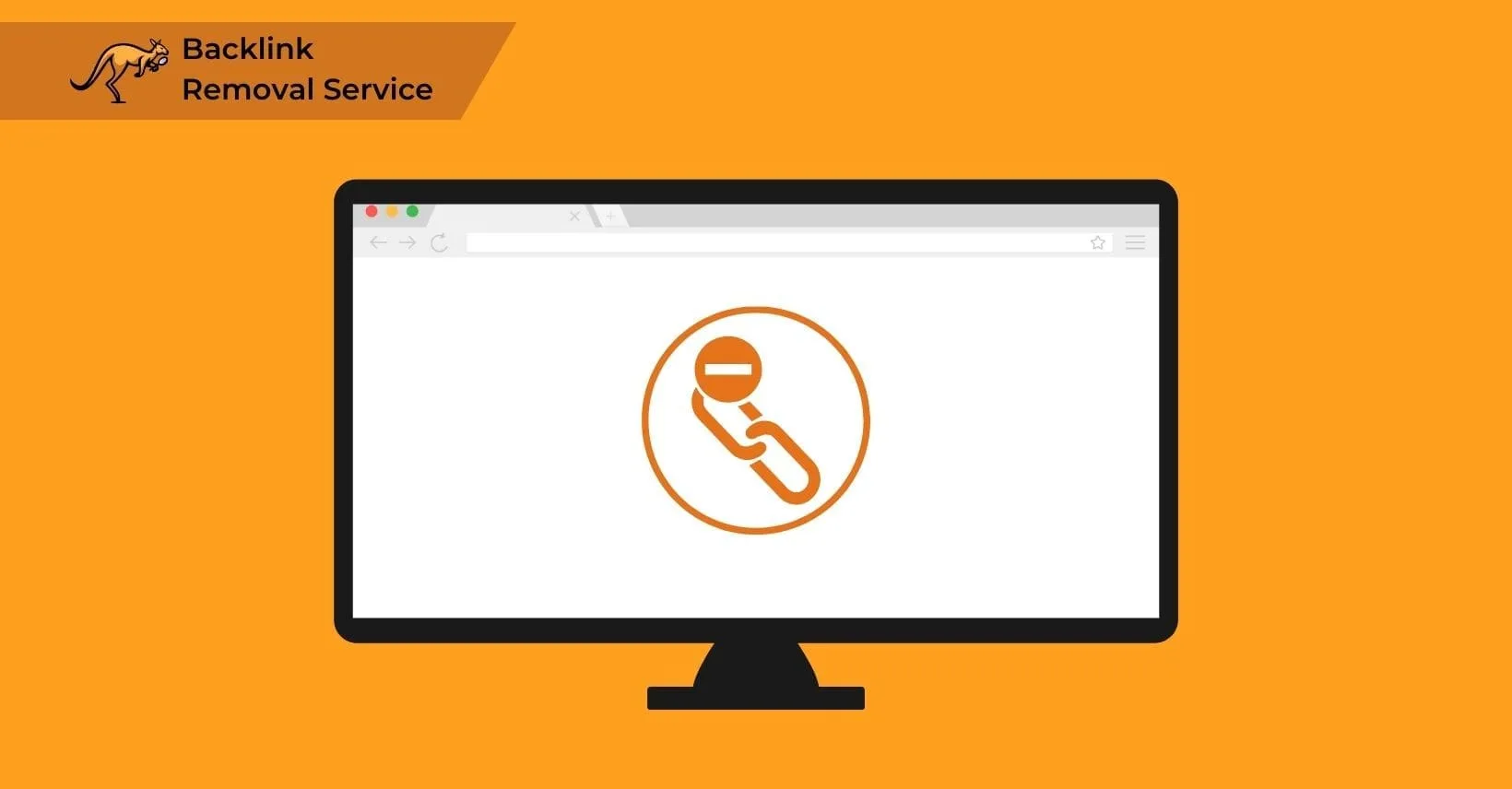SAPE links are paid backlinks from a Russian link network that website owners purchase to boost search engine rankings through artificial authority signals. While the SAPE link network can be powerful when used correctly, SAPE links represent a very risky black-hat option that search engines actively penalize when detected.
But what are SAPE links, and why are the SAPE link networks so important? Before you jump into trying to use SAPE links on your own site, you need to know what they actually are and how they can both benefit and harm your search engine rankings.
What is SAPE?
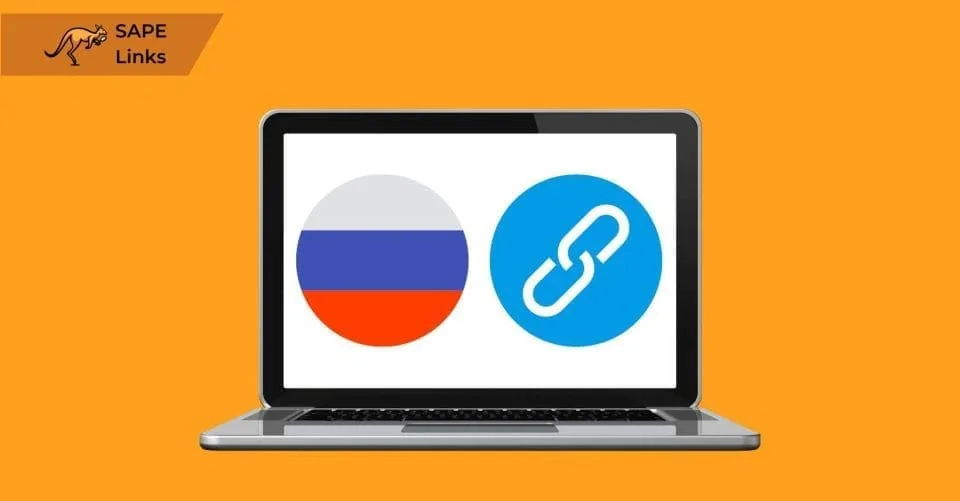
SAPE, a Russian link network, offers a cost-effective platform where users can purchase highly authoritative, aged links for a nominal monthly fee. This links-for-money system provides a rapid influx of new backlinks from a diverse array of owned and non-owned sites within the network.
SAPE links are definitively classified as black-hat SEO because SAPE networks violate search engine guidelines by selling links that pass authority, which search engines explicitly prohibit and actively work to detect and penalize sites that participate in such paid link schemes. It simplifies link building by delivering immediate link juice, requiring only the initial payment without additional costs.
Understanding this system’s mechanics leads us to explore further how SAPE operates, ensuring users can fully leverage its potential in their SEO strategies.
How Does SAPE Work?
The SAPE network operates through a fairly straightforward system where owners of websites (or hosts and hackers who have access to aged sites) implant links on their owned or hacked sites that point to your website, creating backlinks that transfer authority to your domain through a monthly payment structure.
SAPE provides filtering options that allow you to purchase links from a range of over 700,000 sites by selecting specific criteria such as website topics, niches, URL extensions, existing backlink quantities, PageRank scores, domain age, and language preferences to ensure maximum relevance and effectiveness for your SEO campaign.
These links are inserted into a range of places on a site page – the footer, the sidebar, into the content, or even as fake ads on older sites.
Some network options include a range of modes, such as the ability to manually choose links or have the platform do it automatically. However, most people will choose manually at first for obvious reasons.
SAPE offers a streamlined way to acquire new links from an expansive network, enhancing your site’s ranking when these links align with your niche.
Although these links don’t directly drive traffic, they greatly bolster your SEO effectiveness.
Understanding this process is crucial as you delve deeper into the tactical application of SAPE links for your SEO strategy. Now, let’s explore the practical steps in effectively utilizing SAPE links to maximize online visibility.
How to Use SAPE Links
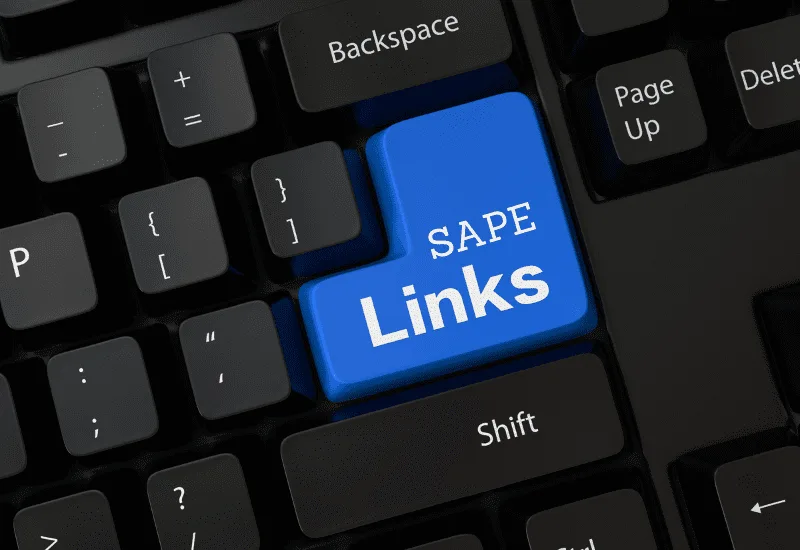
If you decide that it is worth trying to use SAPE links on your site, you can purchase SAPE links by registering on the official SAPE website, creating a project for your domain, selecting links based on your filtering preferences, and paying a monthly fee for each link you acquire.
Since SAPE links are basically regular high-authority links (only bought instead of earned), they contribute to your SEO in the same way. Naturally, search engine platforms are not too happy regarding purchased links, but there are sometimes ways to hide the fact that you bought them.
The entire SAPE link service keeps your own effort to a minimum, but you still have the option of filtering potential backlinks and the pages that they come from. Depending on how you decide to approach the SAPE links, you may even decide to automate or semi-automate this part, too. With these preparations in place, transitioning into the practical steps of engaging with the SAPE network becomes seamless, leading us directly into the essential guide on getting started with SAPE.
Getting Started with SAPE
Naturally, SAPE focuses on Russian services, so you will need to either read Cyrillic Russian or have a translator on hand. Once you are on the page itself – ideally in Google Chrome, due to its translator plugins – you just need to head over to the SAPE website and read through what comes next.
Registering with SAPE means creating an account, but all the instructions are on-screen. It is important to mark yourself as an Optimizer when asked how you will use the system since this allows you to buy links.
You can enter your personal details and passport information, although the majority of it is optional. Once you are all done, you just set up your account and confirm it via email.
Making Payments for Good Links
SAPE takes money for paid links out of a deposit as a small monthly fee, so you will have to set up payment details early if you want to actually start playing around with their links.
SAPE uses the Russian Ruble as its default currency, so you will have to take this into account when you decide to pay for the platform’s services. A quick exchange rate check is easy enough – once you are ready, all you have to do is head down to the Optimiser page, where it will ask you to set up payment options.
There are various payment methods to choose from, with cards obviously being the most reliable if you are trying to buy from an entirely different country. Entering your payment information is easy enough, so just follow whatever instructions are on-screen.
SAPE links are priced in Russian Rubles with costs varying based on the domain authority, with links from higher-authority sites costing more than those from lower-authority domains. Most SAPE links range from approximately $0.10 to $5 per month per link, allowing website owners to build a substantial backlink profile for $100-$500 monthly depending on quality and quantity requirements.
Creating a SAPE Links Project
SAPE links work in projects, which are usually used to designate different sites. This means that most sites will have a distinct SAPE links project, although you might also use projects for individual page categories.
The Optimizer tab guides you through how to create the project, as well as the alternative settings that you are able to adjust depending on your situation. For example, you can have broken links automatically removed up to 30 days after detection.
Be sure to read through the settings properly because SAPE links are quite customizable but also fairly confusing for a first-time user. Beyond that, depending on which tools you are using to translate the site, you may also have to work around imperfect translations.
When all of your settings are saved, you will be taken to your links project page.
Setting up a SAPE Project
Once you are on the project page, you can make smaller tweaks. First, though, you would need to add in the URL, along with an example keyword (usually the keyword that you are targeting with that site).
Adding it will take you to a page where you can start listing off the keywords and anchor text that you want to appear on purchased links. Ideally, these should be keywords that you are targeting, but it is also a good idea to mix in some more generic keywords for link diversity.
These anchor texts should be less than 100 characters and relevant to your business. Make sure to also change the maximum number of options above – this prevents a keyword from being used repeatedly with no limit, which can be important for keeping anchor text diverse.
The more distinct keywords you have, the less important these extra options are, but it is worth learning them in case you want to adjust the way that your links are being purchased in the future.
Finding Links
When your account, new project, and associated websites are all set up, you can start looking for SAPE links. SAPE provides an easy way to filter the links within its search system, meaning that you can target the same users, topics, niches, or distinct kinds of links that you need.
There are a lot of links to choose from and a lot of options to filter our SAPE links. Most will explain themselves, but be sure to play around with the filters in the course of finding potential link opportunities. Understanding how each filter changes which SAPE links the system will suggest can really help in the future.
Note that you can filter by both hard data as well as projected measurements, such as the expected amount of link juice or inbound links you will get. How you decide to filter your link results is entirely up to you.
Choosing Links
After you have filtered your options, you will be given a range of domains that you can purchase a link from. These include URLs on the left and monthly fees on the right, making it easy to see what you would be paying for each link.
Clicking on one will bring up a page that shows whether or not it would be a main page or article link, as well as a set of other information that you might need to know. You can purchase links individually or in bulk, depending on how many you select at once.
After that, it is simply a matter of buying the links and waiting until they take impact, roughly an hour or two after purchase.
Buying SAPE Links
SAPE links, facilitated through a high-authority, Russian-based network, offer a streamlined avenue for bolstering your website’s SEO by embedding purchasable links across a myriad of domains. This method, while efficient in enhancing site visibility and search rankings, necessitates cautious navigation due to the inherent risks and its alignment with black-hat practices, potentially conflicting with search engine protocols.
In leveraging SAPE links via Searcharoo.com, it becomes imperative to vigilantly assess their impact, ensuring any SEO strategy adjustments preserve the essence of SEO integrity. This vigilance leads us to question the effectiveness of SAPE links and whether their potential rewards outweigh the associated risks.
Do SAPE Links Work?

SAPE links can effectively improve search engine rankings by providing a quick boost to your website’s authority through high-quality backlinks from aged domains, which often results in noticeable ranking improvements within 30-60 days when implemented strategically across relevant sites. However, engaging with SAPE’s black-hat strategies involves inherent risks due to violating standard search engine guidelines, which prohibit paid links and similar tactics aimed at manipulating search results.
Such practices can attract severe penalties from search engines, affecting your site’s on-page and off-page SEO until corrective actions are taken. Despite these risks, the allure of SAPE’s potential benefits tempts many web admins across various online sectors.
This brings us to explore the advantages of employing SAPE, highlighting how its powerful network can impact your site’s SEO performance.
The Pros of SAPE
The Network Provides Powerful Links
SAPE links provide SEO benefits by coming from mostly legitimate, aged sites that are part of the network, making SAPE links far more powerful than links from Facebook groups or newly created websites, which helps improve search rankings more effectively when implemented as part of a broader strategy.
While different domains will rank differently on Google, most of the websites within the network will be fairly high-quality, giving you a good range of websites to buy links from that Google will generally see positively.
The Network Gives You Plenty of Inner Page Links
Buying links allows you to tailor them to your needs. For example, if you want inner page links, you can arrange to get inner page links that will boost your website SEO without Google immediately flagging them as a problem.
Using a network like this gives you more freedom in how you link to your site. The entire point of the SAPE network service is to make linking much easier, so you can approach webmasters for links to your “money site” that lead directly to inner pages or other exact parts of the website.
The Network Offers an Automatic Mode
SAPE’s Automatic and Semi-Automatic Modes streamline the SEO link-building process by aligning with your website’s budget and SEO objectives through an AI-based service. This automation is particularly beneficial for businesses lacking the time to engage with webmasters or analyze domain rankings manually.
By swiftly aggregating links from various website articles and home page sections, SAPE aims to enhance your Google search ranking. However, while this approach offers convenience and potential SEO benefits, it introduces exact risks and challenges, leading us to examine the potential downsides of relying on SAPE for link building.
The Cons of SAPE
Search Engines Penalized Paid Links Years Ago
SAPE links carry significant risks because search engines have been penalizing paid link networks for over 10 years, and SAPE’s footprint can trigger penalties that cause your website to virtually disappear from search results until the penalty is removed and all paid links are disavowed.
This can tank your search engine rankings if you are discovered. A service like the SAPE network can’t prevent Google from deciding that your blog is spam, so using SAPE can be risky if you suddenly shoot up in ranking potential or gain a huge range of links from different webmasters.
SAPE Only Covers Link SEO
Link networks like SAPE are not an all-purpose SEO tool. The service provides easy access to links from a range of sites and/or article results that can boost Google search rankings, but Google looks at more than just links.
While getting Google-optimized links from SAPE will boost page rank in the following 30 days, there is a lot more you could be doing during that 30 days period that doesn’t carry a risk of penalties. For example, optimizing your home page or creating a regular blog post structure.
SAPE Uses A Lot of Domains
Not all domains within the SAPE network are equally beneficial. Without direct contact or communication, you risk acquiring links from less relevant sources like forums or local business directories, which may not effectively serve your SEO goals.
This variability highlights the importance of strategic selection based on your exact ranking objectives. Such considerations are crucial when deciding whether to engage with the SAPE Links Network, as it ultimately influences the quality and relevance of the backlinks you integrate into your SEO strategy.
Should You Use the SAPE Links Network?
This article has detailed the powerful yet risky nature of SAPE links, a tool that, when wielded carefully, can potentially elevate your SEO efforts. Engaging with SAPE links is not without its hazards, as these black-hat techniques can lead to important repercussions from Google and other search engines if detected. As a marketer or site owner, the decision to implement such strategies hinges on your willingness to navigate these risks and the ethical considerations they entail.
As we transition into our final thoughts on using SAPE links for SEO, it’s important to weigh these factors carefully. The delicate balance between achieving quick SEO gains and upholding compliant practices defines the challenges inherent in using SAPE links. This concluding section aims to encapsulate the potential benefits and pitfalls, guiding you toward a well-informed decision about integrating SAPE links into your SEO strategy.
Final Thoughts on Using SAPE Links for SEO
Engaging with SAPE links presents a potent opportunity for enhancing your website’s SEO through a network of high-authority links. However, it’s important to recognize the inherent risks involved with this approach, predominantly because it aligns with black-hat SEO practices, which are frowned upon by search engines like Google. This strategy can offer quick SEO gains in link building. Yet, it also poses substantial risks, including potential penalties from search engines that could undermine your long-term online presence and credibility.
A careful, strategic approach is essential for those considering the use of SAPE links. Weighing the benefits of immediate SEO improvement against the potential for severe penalties should guide your decision-making process. If you choose to proceed, constant vigilance and a readiness to adapt to the evolving SEO landscape are indispensable. Finally, using SAPE links should align with a broader understanding of your SEO strategy and the ethical considerations that shape sustainable digital marketing practices.
SAPE links present a risk-reward proposition that each website owner must evaluate based on their risk tolerance and business model, as SAPE links may deliver short-term ranking improvements but carry substantial long-term risks of penalties that can completely remove a website from search results and damage brand reputation permanently.
